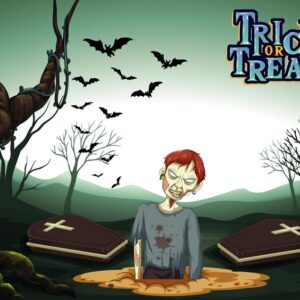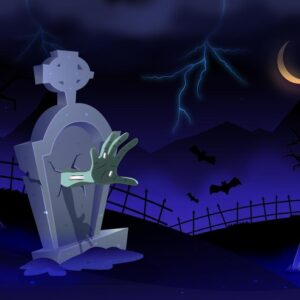Introduction
In literature and film, the trope “villains are destined to die” is a recurring theme that shapes the narrative and character arcs. This concept not only provides closure but also reinforces moral lessons and plot structures. This article delves into the reasons behind this trope, its significance in storytelling, and how it impacts the audience’s perception.
Understanding the Trope: Villains Are Destined to Die
The Role of Villains in Stories
Villains play a crucial role in stories. They create conflict, drive the plot, and often reflect the darker aspects of humanity. By challenging the protagonist, they help to highlight the hero’s virtues and strengths.
Common Traits of Villains
- Ambition: Often driven by a desire for power or control.
- Morality: Typically operate outside the bounds of societal norms and ethics.
- Complexity: Well-written villains have depth, making them compelling and memorable.

The Inevitable Fate of Villains
The idea that villains are destined to die stems from several narrative necessities:
- Moral Resolution: The death of a villain often signifies the triumph of good over evil.
- Plot Closure: It provides a definitive end to the conflict, offering closure to the story.
- Character Development: The demise of the villain can catalyze growth and change in the protagonist.
Historical Context of Villains Meeting Their End
Ancient Myths and Legends
In ancient myths and legends, the concept of villains meeting their demise was prevalent. These stories were often didactic, teaching moral lessons through the downfall of antagonists.
Examples from Mythology
- Greek Mythology: Figures like Medusa and the Minotaur meet tragic ends.
- Norse Mythology: Loki, despite his cunning, faces dire consequences for his actions.
Classic Literature
Classic literature also embraced this trope, with many iconic villains meeting their end to uphold moral and ethical values.
Notable Examples
- Shakespeare’s Plays: Villains like Macbeth and Iago face ultimate retribution.
- Victorian Literature: Characters like Miss Havisham in “Great Expectations” meet tragic fates.

Modern Interpretations of Villain Demise
Film and Television
In modern storytelling mediums such as film and television, the trope “villains are destined to die” remains prevalent. This helps maintain the moral balance and delivers a satisfying resolution to the audience.
Examples from Cinema
- The Dark Knight: The Joker’s eventual defeat signifies the restoration of order.
- Star Wars: Darth Vader’s redemption and subsequent death complete his character arc.
Contemporary Literature
Contemporary literature continues to explore this trope, often adding layers of complexity and nuance to villain characters.
Examples from Modern Novels
- Harry Potter Series: The demise of Voldemort is pivotal to the narrative’s resolution.
- The Hunger Games: President Snow’s death symbolizes the end of tyranny.

Themes and Symbolism in Villain Demise
The Triumph of Good Over Evil
One of the primary reasons villains are destined to die is to reinforce the theme of good triumphing over evil. This resolution is satisfying for the audience and aligns with societal values.
Symbolic Meanings
- Justice: The death of the villain serves as a form of poetic justice.
- Redemption: Sometimes, the villain’s death can also symbolize redemption or the end of a corrupt era.
Narrative Necessity
From a storytelling perspective, the demise of a villain is often necessary to bring the story full circle and provide closure.
Plot Devices
- Foreshadowing: Villains’ eventual downfall is often hinted at through foreshadowing.
- Climax and Resolution: The villain’s demise usually coincides with the story’s climax, leading to a satisfying resolution.

The Psychological Impact on Audiences
Satisfaction and Closure
Audiences find satisfaction in seeing villains meet their end, as it provides a sense of justice and closure. This emotional payoff is crucial for a memorable and impactful story.
Emotional Reactions
- Relief: The defeat of the villain often brings relief to the audience.
- Vindication: Audiences feel vindicated when the villain receives their comeuppance.
Moral Lessons
Stories where villains are destined to die often impart moral lessons, reinforcing the idea that evil actions have consequences.
Ethical Takeaways
- Consequences of Actions: Highlighting the importance of ethical behavior.
- Moral Integrity: Emphasizing the value of maintaining moral integrity despite challenges.
Exploring Alternatives: Do Villains Always Have to Die?
Redemption Arcs
Some stories explore the possibility of redemption for villains, offering a more nuanced approach to character development.

Examples
- Severus Snape: His redemption in the “Harry Potter” series adds depth to his character.
- Kylo Ren: His redemption in the “Star Wars” sequel trilogy adds complexity to his narrative.
Ambiguous Endings
Not all stories conclude with the death of the villain. Some choose to leave the fate of the antagonist ambiguous, allowing for open-ended interpretations.
Examples
- Inception: The ambiguous ending leaves the fate of the antagonist uncertain.
- Blade Runner 2049: Leaves questions about the true villain unresolved.
Conclusion
The trope “villains are destined to die” is deeply ingrained in storytelling, serving multiple narrative functions and providing moral resolution. While modern interpretations offer more nuanced approaches, the traditional demise of villains continues to be a powerful tool in delivering impactful and satisfying stories. Understanding this trope’s significance enhances our appreciation of the stories we consume and the moral lessons they impart.
FAQs
Why do villains often die in stories?
Villains often die to provide moral resolution, plot closure, and highlight the triumph of good over evil.
Can villains have redemption arcs?
Yes, some stories explore redemption arcs for villains, adding complexity to their characters.
Are there stories where villains don’t die?
Yes, some stories choose to leave the fate of villains ambiguous or allow them to survive, offering alternative narrative approaches.
What is the impact of a villain’s death on the audience?
A villain’s death often provides satisfaction, closure, and reinforces moral lessons for the audience.
How do modern stories handle the trope of villain demise?
Modern stories may add layers of complexity, explore redemption arcs, or leave the fate of villains ambiguous while maintaining the core themes of justice and resolution.
External Link
For further insights on storytelling and character development, visit ;www.quora.com
For More Blog Visit: tourtripguide.com




